Maintaining proper chlorine levels is essential for a safe and enjoyable swimming experience. Many homeowners struggle with understanding how to balance their pool’s chemistry, including the pH for pool water and the impact of additional elements like ozone, acid, and calcium. This article will cover how to accurately test chlorine levels, ideal ranges for various pool types, and effective adjustments to maintain stability year-round. By reading this, homeowners will gain valuable insights into resolving chlorine-related issues, ensuring their pools remain healthy and inviting. Blue Wave Outdoors is here to help you master these crucial aspects of pool care.
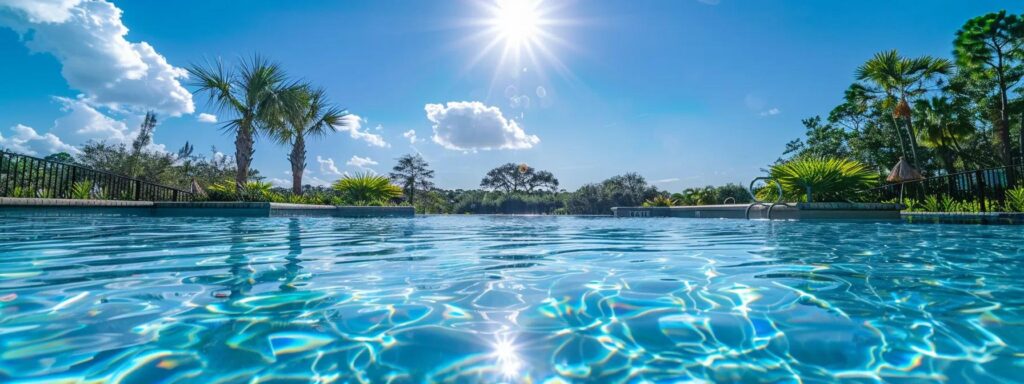
Chlorine plays a vital role in maintaining pool water quality by effectively eliminating bacteria and preventing contamination. Understanding chlorine concentration and how it interacts with cyanuric acid is essential for achieving ideal levels. This section addresses common misconceptions about chlorine use, clarifying the impacts of high chlorine levels in pools and providing practical insights for homeowners.
Chlorine, particularly in its form as hypochlorite, is essential for maintaining pool water cleanliness. It acts by breaking down into hypochlorous acid, which effectively targets and eliminates harmful bacteria and algae, thus ensuring a safe swimming experience. Proper chlorine levels protect against irritation caused by contaminants while keeping the pool water fresh and inviting for users.
Chlorine, specifically sodium hypochlorite, is crucial in maintaining optimal water quality for swimming pools. When added to pools, it interacts with tap water and breaks down into hypochlorous acid, effectively neutralizing harmful microorganisms. Regularly monitoring chlorine levels helps prevent issues such as algae growth and bacterial contamination, which can compromise the health and safety of swimmers, ensuring a pleasant and safe swimming experience.
Many homeowners wrongly assume that higher chlorine levels equate to a cleaner pool environment. In reality, excessive chlorine can lead to irritations for swimmers and may react negatively with organic matter, creating chloramines, which are responsible for the strong chemical smell often associated with pools and hot tubs. Understanding pool chemistry levels is essential, as maintaining the appropriate balance ensures effective disinfection while keeping the water safe and comfortable for enjoyment, much like the standards set for drinking water.
Now that the importance of chlorine levels is clear, it’s time to understand how to test them accurately. Knowing how to check your pool’s chlorine can keep your water safe and sparkling.
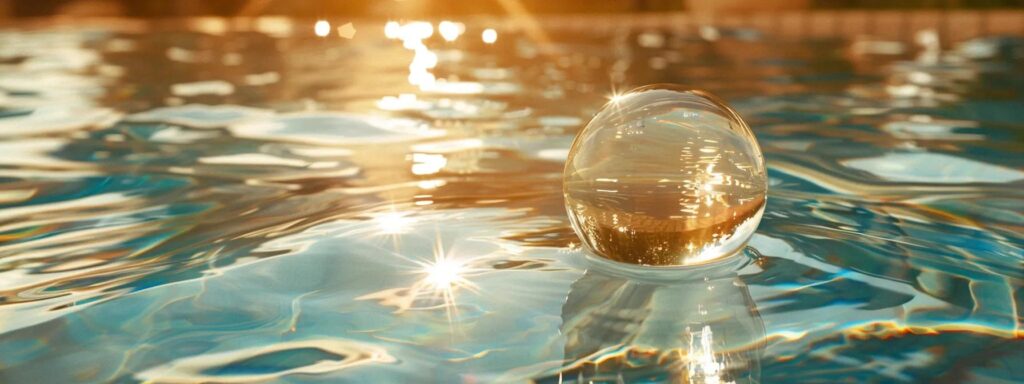
To maintain ideal swimming pool chlorine levels, homeowners must use reliable testing kits and tools. This section provides a step-by-step guide to measuring chlorine levels effectively and interpreting test results for optimal balance. Understanding results aids in managing alkalinity and ensuring proper water purification, contributing to a safe and enjoyable pool environment free from unpleasant odor.
When selecting testing kits for pool maintenance, homeowners should consider options like blue wave outdoors that measure not only chlorine levels but also total dissolved solids and ammonia, as these factors significantly impact water quality. Reliable test strips and liquid test kits are effective tools for determining the presence of contaminants and ensuring water balance is maintained. Regular testing allows for prompt adjustments, ensuring a safe swimming environment free from irritation and harmful organisms.
To effectively measure chlorine levels, homeowners should begin by collecting a water sample from elbow-deep in the pool, away from skimmers and return jets to avoid contamination. Next, utilizing a reliable testing kit, they should follow the specific instructions to add the necessary reagents to the sample. Observing the color change and comparing it with the provided chart allows for accurate interpretation of chlorine levels, ensuring proper water quality for a safe swimming environment.
| Step | Action | Purpose |
|---|---|---|
| 1 | Collect water sample | Avoid contamination from skimmers and jets |
| 2 | Use testing kit as per instructions | To accurately measure chlorine levels |
| 3 | Compare color change to chart | Determine chlorine concentration effectively |
Interpreting test results for chlorine levels is vital for maintaining a healthy pool environment. Homeowners should look for chlorine concentrations within the ideal range of 1 to 3 parts per million (ppm). If results indicate levels outside this range, corrective measures such as adjusting chlorine dosage are necessary to ensure effective disinfection and protect swimmers from potential irritations and contaminants.
Once you know how to test chlorine levels, the next step is knowing what those levels should be. Different pools have different needs, and understanding these can keep your water clear and safe.
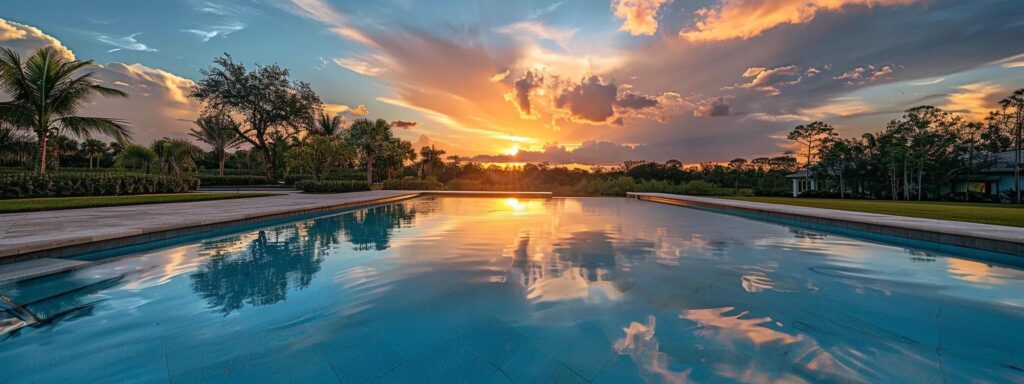
Maintaining appropriate chlorine levels varies between different pool types. Residential pools typically require a chlorine range of 1 to 3 parts per million (ppm). Above-ground pools may have different requirements compared to in-ground pools due to their size and filtration systems. Saltwater pools introduce unique considerations, emphasizing the importance of regular monitoring to ensure safe swimming conditions.
For residential pools, maintaining chlorine levels between 1 to 3 parts per million (ppm) is critical to ensure a clean and safe swimming environment. This range effectively disinfects the water, preventing the growth of harmful bacteria and algae while also minimizing swimmer irritation. Homeowners are encouraged to regularly test their chlorine levels, as fluctuations can occur due to various factors, such as rain or pool usage, and prompt adjustments will help sustain optimal water quality.
Adjustments for above-ground and in-ground pools require different considerations due to variations in size, filtration systems, and environmental exposure. Above-ground pools generally need a slightly higher chlorine concentration to compensate for their smaller volumes and increased user activity, while in-ground pools benefit from the efficiency of larger filtration systems that allow for better chlorine distribution. Homeowners should regularly test and adjust chlorine levels accordingly to maintain a safe swimming environment, ensuring protection against bacteria and algae growth.
Saltwater pools require unique attention when it comes to managing chlorine levels. While these systems generate chlorine through electrolysis, it is essential for homeowners to regularly monitor the water to maintain effective sanitation. Proper testing will help ensure the chlorine concentration remains within the optimal range of 1 to 3 parts per million (ppm) while addressing the potential presence of salt and other chemicals that can influence water quality.
Chlorine levels must change with the season and the water’s needs. Knowing how to adjust them will keep your pool safe and inviting.

Adjusting chlorine levels is essential for ensuring a safe and enjoyable pool environment. This section will cover practical methods to increase chlorine concentration when levels are low, effective techniques for reducing high chlorine levels, and how environmental factors can influence these levels. Understanding these elements helps homeowners maintain optimal water quality and enhance their overall pool experience.
To increase chlorine concentration in a swimming pool, homeowners can add liquid chlorine or granular chlorine, which quickly dissolve and elevate the chlorine levels to the desired range. Regularly checking the chlorine levels using reliable testing kits before and after adjustments ensures that the additives achieve the intended impact, enhancing water quality and safety. When applying these chemicals, it is advisable to do so during the evening to prevent sunlight from dissipating the chlorine too rapidly, ultimately ensuring a more effective sanitation process.
To lower high chlorine levels in a swimming pool, homeowners can take several effective approaches. Diluting the water by partially draining the pool and refilling it with fresh water is one of the simplest methods to reduce chlorine concentration. Additionally, running the pool’s filtration system continuously helps to circulate the water and allow chlorine to dissipate over time, particularly when supplemented with exposure to sunlight, which naturally aids in breaking down excess chlorine. Regular monitoring of chlorine levels following these adjustments ensures that the water remains safe and pleasant for swimmers.
Environmental factors play a significant role in the effectiveness of chlorine levels in swimming pools. Variables such as sunlight, temperature, and rainfall can influence chlorine stability and concentration. For instance, UV rays from the sun can rapidly deplete chlorine, requiring homeowners to adjust their chlorine dosage accordingly to maintain the ideal range of 1 to 3 parts per million (ppm) and ensure a safe swimming environment.
Chlorine levels can shift with the seasons, but stability is key. Learn how to keep your pool safe and clean all year long.
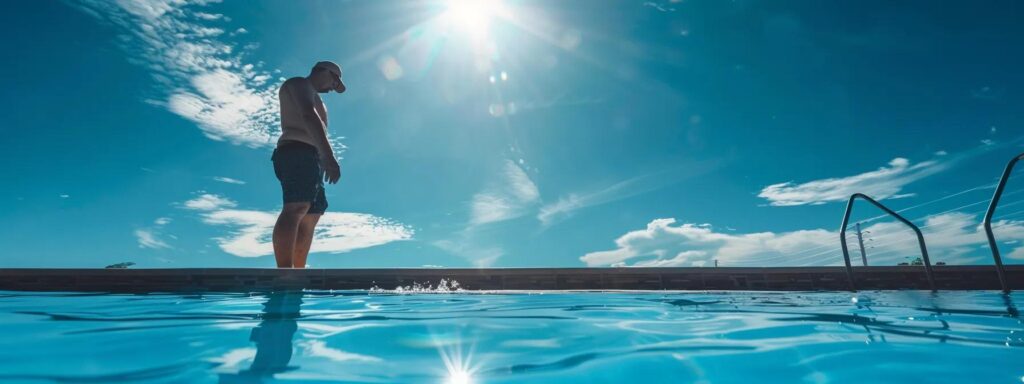
Stable chlorine levels are vital for a healthy pool experience, achieved through routine maintenance and consistent monitoring practices. Seasonal adjustments based on temperature and pool usage are necessary to maintain these levels effectively. Additionally, regular pool cleaning plays a crucial role in ensuring optimal sanitation. Each of these elements will be discussed in detail to provide homeowners with practical insights for maintaining superior water quality.
Routine maintenance is essential for sustaining optimal chlorine levels in pools throughout the year. Homeowners should develop a consistent schedule for testing water quality, ideally at least once a week, to monitor chlorine concentration and make timely adjustments. By regularly cleaning filters, skimming debris, and ensuring proper chemical balance, homeowners can prevent fluctuations in chlorine levels and guarantee a safe swimming environment, enhancing the overall pool experience.
Seasonal adjustments are essential for maintaining stable chlorine levels, as temperature fluctuations and swimming pool usage can significantly impact water chemistry. During warmer months, increased sunlight and higher temperatures can cause chlorine to dissipate more quickly, necessitating more frequent testing and potential increases in chlorine dosage. Conversely, in cooler months or periods of lower pool activity, chlorine levels may stabilize, allowing for less frequent adjustments while still ensuring a safe and enjoyable swimming environment.
| Season | Temperature Effect | Recommended Actions |
|---|---|---|
| Spring | Rising temperatures can lead to increased chlorine usage | Regular testing and possible increase in chlorine levels |
| Summer | High sunlight and pool activity deplete chlorine more rapidly | Frequent monitoring and adjustments as needed |
| Fall | Decreasing temperatures may stabilize chlorine levels | Monitor less frequently, adjust as necessary |
| Winter | Low usage and cooler temperatures often allow for stability | Periodic checks to ensure levels remain within range |
Regular pool cleaning is essential for maintaining stable chlorine levels and ensuring a safe swimming environment. By removing debris, leaves, and other organic matter from the pool, homeowners can prevent unwanted contaminants from compromising chlorine effectiveness and leading to imbalances. Establishing a routine for cleaning filters and skimming the surface not only enhances water clarity but also supports the chemical balance required for optimal disinfection.
Even with careful attention, chlorine levels may still falter. Understanding why this happens is key to keeping your pool clear and inviting.
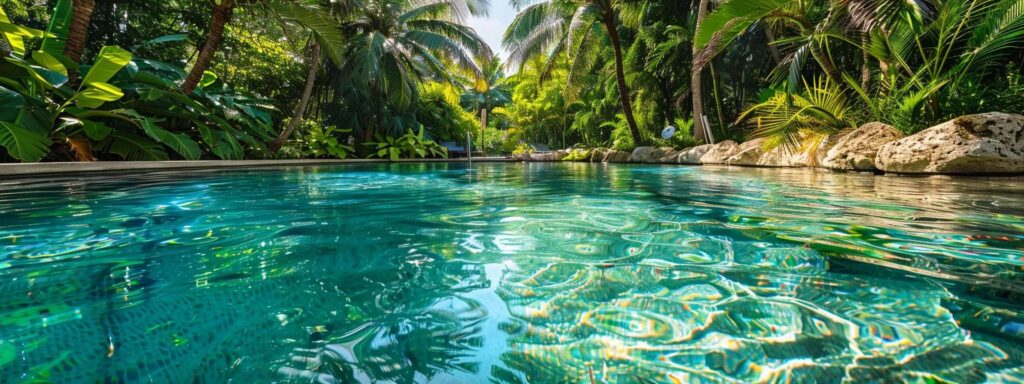
Troubleshooting chlorine level issues is essential for maintaining a healthy pool experience. This section emphasizes identifying signs of imbalanced chlorine levels, offering solutions for common chlorine-related problems, and outlining when to consult a professional for assistance. These insights will empower homeowners to manage their pool’s water quality effectively and ensure a safe environment for swimming.
Identifying signs of imbalanced chlorine levels is crucial for maintaining a healthy pool experience. Homeowners should watch for symptoms like cloudy water, unpleasant odors, or swimmer irritation, which may indicate that chlorine levels are either too high or too low. Regular testing and observation of water clarity can help prevent these issues, ensuring a safe and enjoyable swimming environment for everyone.
Addressing common chlorine-related problems requires prompt action and informed decision-making. If the pool water appears cloudy or has unpleasant odors, this often signals an imbalance in chlorine levels; thus, homeowners should start by testing the water to determine the exact chlorine concentration. If levels are low, adding the appropriate chlorine product can quickly restore balance, while high levels can be managed by diluting the pool water through partial draining, ensuring a safe and inviting swimming environment.
Homeowners should consider consulting a professional if persistent chlorine level imbalances occur, despite regular testing and attempts to adjust the levels. If symptoms, such as strong chemical odors, cloudy water, or swimmer irritations, persist, a professional can provide expert insights and solutions tailored to the specific pool environment. Engaging an experienced technician ensures a comprehensive evaluation and remediation, safeguarding the health and enjoyment of the pool.
| Signs to Consult a Professional | Possible Implications | Action Recommended |
|---|---|---|
| Persistent chlorine imbalance | Could indicate a deeper contamination issue | Engage a pool service technician for assessment |
| Cloudy water and strong odors | Indicates ineffective sanitation | Seek professional advice for remediation |
| Swimmer irritations | May suggest inadequate water treatment | Consult an expert for a comprehensive evaluation |
Mastering chlorine levels is essential for sustaining a healthy and enjoyable pool environment. Regular testing and adjustments allow homeowners to effectively combat bacteria and algae while preventing swimmer irritation. By understanding optimal chlorine ranges and addressing common misconceptions, pool owners can enhance water quality and maintain a safe swimming experience. Prioritizing this aspect of pool maintenance fosters not only cleanliness but also the overall satisfaction and safety of all users.